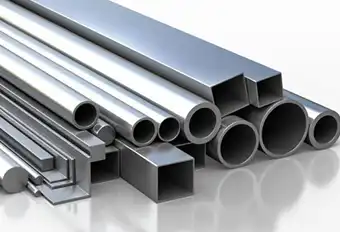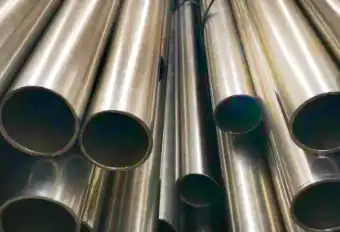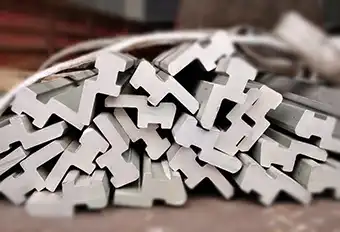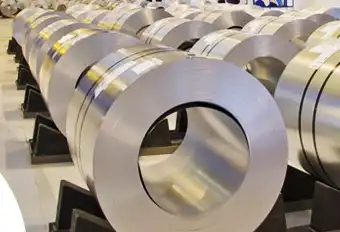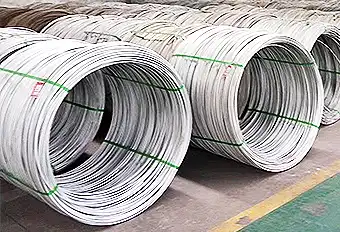Electro refining is one of a collection of electrochemical processes which are primarily concerned with the extraction of metals from their ores and or the subsequent refining of the metals to high purity.
The main advantages of electro refining processes are they are designed to handle a wide variation in the quality of the base scrap and conversely can provide a particularly high purity of end product material.
Electrochemical processing is used both in the primary extraction of metals from their ores and in the subsequent refining of metals to high purity. Both operations are accomplished in an electrolytic cell, a device that permits electrical energy to perform chemical work. This occurs by the transfer of electrical charge between two electrodes immersed in an ionically conducting liquid (electrolyte) containing metal dissolved as positive ions.
At the negatively charged cathode the metal cations acquire electrons (are reduced), and deposit as neutral metal atoms. At the positively charged anode there are two possible reactions, depending upon the type of cell. In an electrowinning cell the dissolution of the anode metal itself occurs. The more noble metals such as copper and zinc are electrolyzed from aqueous electrolytes, whereas reactive metals such as aluminum and magnesium are electrolyzed from electrolytes of their fused salts.
In an electrorefining process, the anode is the impure metal and the impurities must be lost during the passage of the metal from the anode to the cathode during electrolysis, i.e. the electrode reactions are, at the anode:
M → Mn+ + ne-
and at the cathode:
Mn+ + ne- → M
Electrorefining is a much more common process than electrowinning and such plants occur throughout the world on scales between 1000-100,000 ton/year.
Usually they are part of a larger operation to separate and recover pure metals from both scrap and primary ores. Therefore, the process must be designed to handle a variable-quality metal feed and lead to a concentration of all the metals present in a form which can be treated further. Electrorefining often provides a particularly high purity of metal.
Electrorefining processes using a molten salt or non-aqueous electrolyte are used and, indeed, are the subject of further development. This is due to the possibilities they offer for increasing current densities and refining via lower oxidation states not stable in water (e.g. refining of copper via Cu+ would almost halve the energy requirement). However, aqueous processes presently predominate due to their ease of handling, more developed chemistry and familiarity with aqueous process liquors and electrolytes.
Aqueous electrorefining: The conditions used for the refining of five metals are summarized in Table 1. The electrolyte and other conditions must be selected so that both the anodic dissolution and the deposition of the metal occur with high efficiency while none of the impurity metals can transfer from the anode to the cathode. Certainly there must be no passivation of the anode and the objective is to obtain a good-quality, often highly crystalline, deposit at the cathode.
Where necessary, additives are added to the electrolyte to enforce the correct behavior at both electrodes. Chloride ion is a common addition to enhance the dissolution process and, where essential, organic additives are used to modify the cathode deposit. Since, however, organic compounds can be occluded to some extent and reduce the purity of the metal, their use is avoided when possible.
To illustrate the consideration mentioned above the following examples are described below.
Electrorefining is widely used for the purification and production of copper that is suitable for electrical applications. Such plants exist throughout the world on production scales between 1000 and 100 000 t/a.
In an electrorefining process, the anode is the impure metal and the impurities are lost during the passage of metal from the anode to the cathode during electrolysis. The electrode reactions in the case of Cu electrorefining are as follows.
Anode reaction: Cu → Cu2+ + 2e-
If Ni and Fe are also present in the impure anode, they will dissolve as follows:
Ni → Ni2+ + 2e-
Fe → Fe2+ + 2e-
Cathode reaction: Cu2+ + 2e- → Cu
A suitable voltage is applied to the electrodes to cause oxidation of copper metal at the anode and reduction of Cu2+ to form copper metal at the cathode. This works efficiently because copper is both oxidized and reduced more readily than water. Metallic impurities with a lower reduction potential than copper are less noble and will readily dissolve at the anode but do not plate at the cathode. More noble metals with a higher reduction potential are not dissolved at the anode, instead they collect at the bottom of the cell as anode slimes. The anode slimes can be captured and processed to recover the valuable metals.
Cell voltage and current density are the two important parameters in copper electrorefining. The total voltage is determined by the equilibrium cell voltage, anodic and cathodic overpotential and Ohmic potential drop in electrolyte, hardware and power supply. It is generally accepted that copper production increases with an increase of current density at the cost of current efficiency. The electrolyte that serves as a carrier for the Cu2+ ions is sometimes in the form of a molten salt or non-aqueous electrolyte.
These forms of electrolyte offer opportunities for increasing current densities and refining via lower oxidation states that are not stable in water. However, aqueous processes are the most widely used due to the ease of handling, more developed chemistry and familiarity with aqueous process liquors and electrolytes. Cu electrorefining is typically conducted using a sulphate medium for the transport of Cu ions.
The theory behind the redox equilibria, electrochemical kinetics, mass transport, cathode morphology and current distribution for a Cu electrorefining operation are discussed in the following paragraphs.
In the paper of T.Takenaka et al. the electrorefining of Mg has been investigated in a molten salt system, and the electrolysis conditions for the effective purification have been discussed. A purified mixture of MgCl2–NaCl–CaCl2 was used as an electrolytic bath. Magnesium metal was dissolved anodically by potentiostatic electrolysis, and purified Mg was electrodeposited at the cathode.
A certain degree of cathodic overpotential was required for the effective electrodeposition of Mg metal, while large anodic overpotential directly caused the deterioration in the purity of Mg electrodeposit; it was necessary for the anodic overpotential to be less than 1.0V for good purification. Under the suitable electrolysis condition, the Fe content in the Mg electrodeposit was less than 10 ppm.
A couple of subjects on recycling Mg metal and its alloys have been also studied: purification of Mg alloy by an electrorefining technique and distinction of Mg alloys. It was shown that pure Mg metal was electrodeposited at the cathode by the electrorefining of Mg alloy. X-ray fluorescence analysis was applied to distinction of Mg alloys, and the measuring conditions were discussed. It was concluded that the electrorefining process and X-ray fluorescence analysis were usable for the recycling of Mg metal and alloys.


